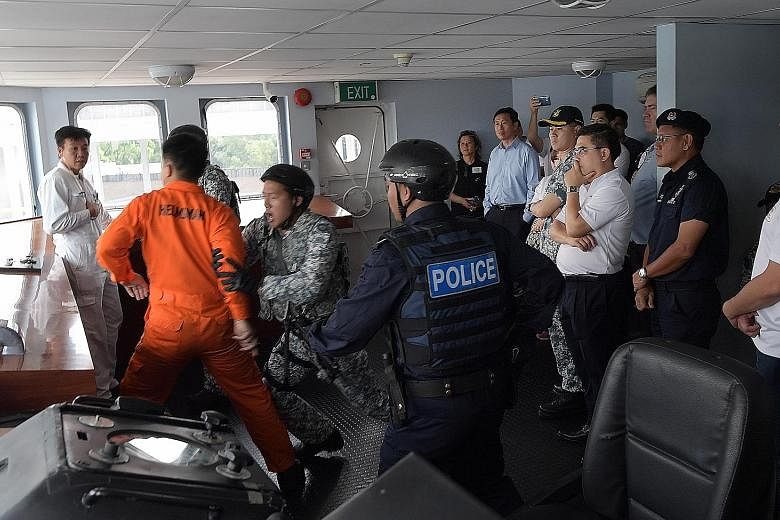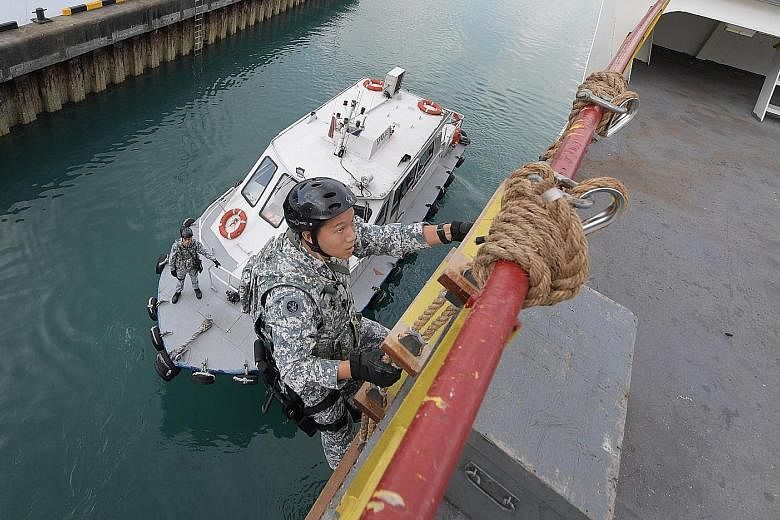When a ship sails serenely into Singapore's waters, it is hard to tell - from the outside - whether it has actually been taken over by pirates or terrorists.
One way to find out is to physically board the ship. But whoever does so risks his life if the ship has really been hijacked.
Welcome to the world of the Republic of Singapore Navy's 180 Squadron, whose crew board sensitive vessels to make sure they have not been taken over.
The sea marshals are "armed to the teeth", said the squadron's commanding officer, Lieutenant-Colonel Nick Neo. They carry arms such as a semi-automatic weapon, baton and pepper spray as their defence against the bad guys. They are also well-trained in close combat.
"When we are on board ships, we have nowhere to run and we have to defend ourselves before reinforcements arrive," said Lt-Col Neo.
The 180 Squadron came under the spotlight yesterday, when Second Defence Minister Ong Ye Kung along with members of the Advisory Council on Community Relations in Defence paid it a visit on Pulau Brani.
Last year, the squadron, which has a strength of about 50 people, conducted 585 checks on vessels that entered Singapore's waters.
The Maritime Security Taskforce, which coordinates security operations at sea, would first identify which vessels need to be checked.
This is based on factors such as the vessel's cargo, crew and its last port of call. For example, tankers carrying oil, chemicals and gas may be subject to closer scrutiny.
The task force then notifies the squadron and the vessels about six hours beforehand.
Teams of four to eight men are subsequently sent to board vessels. "Boarding is randomised to prevent pattern predictability and can last between two and six hours," Lt-Col Neo said.
After boarding the ship - usually using a rope ladder - the sea marshals make their way to the bridge before they check the engine room and the forecastle located on the upper deck.
They look out for warning signs of piracy or terrorism. The ship's crew may be quizzed about the cargo on board and whether the vessel carried firearms.
The sea marshals also make sure that no smaller vessels or their crew followed the ship to sneak into Singapore's waters.
Corporal First Class Li Weng Kin, 22, who has encountered Malay, Korean and Tagalog speakers, said that he has faced language barriers.
"In these cases, we get by with sign language most of the time and the captain can understand us," he said.
Data from a regional cooperation effort to fight piracy showed that there were 101 armed robbery and piracy incidents last year in the region, including the Strait of Malacca and the South China Sea. It is a 16 per cent increase from 2016.
Noting that Singapore relies heavily on maritime trade, Lt-Col Neo said: "Any maritime incident that happens here can undermine shipping confidence... All sensitive vessels entering Singapore are monitored."



